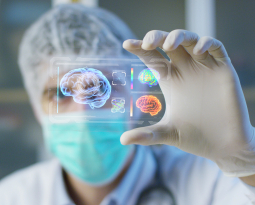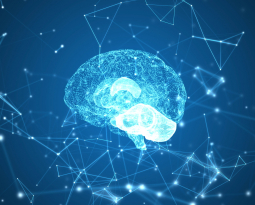
Neurology of the Posture System
Postural Neurology is at the forefront of neurologic education for health care professionals. Postural Neurology is a system to understand the neurology of the Posture System and how to analyze and correct neurologic dysfunction for optimal human performance and postural design.
Practitioners who implement Postural Neurology understand how to assess dysfunctional outputs of the neurology controlling the Posture System and how to implement treatment plans to improve function and create neuroplastic changes.
There are multiple aspects of the neurologic system that contribute to proper posture. Synergistic integration of these systems results in flexor/extensor synergy, upright postural design, and postural stabilization with dynamic movement.
There are 7 main parts of the brain that are responsible for the neurology controlling the Posture System. Each aspect of the neurology has a unique function that is necessary for proper function of the Posture System.
- Sensory Cortex
- Motor Cortex
- Cerebellum
- Pontomedullary Reticular Formation
- The Visual System
- The Vestibular System
- The Spinal Pathways
Sensory Cortex
The sensory cortex, located in the parietal lobe of the brain, is how you feel and interpret your world. Ascending information of proprioception, joint position, tactile stimulation, temperature, pain, and so on arrive in your sensory cortex from the periphery for processing and interpretation. The sensory cortex is important to posture because it perceives proprioception and joint position. Understanding where your body is in space is fundamental for achieving postural stability.
Motor Cortex
Our ability to move within our environment is dependent upon functional output of the motor cortex. Pathways descend from the motor cortex to produce movements within the environment. The motor cortex of the frontal lobe is important for posture because it initiates voluntary motor output of skeletal muscles contralaterally and stabilization of posture muscles ipsilalterally. Together the sensory and motor cortices achieve sensorimotor integration for processing of sensory inputs for proper motor outputs in response to stimuli.
Cerebellum
The cerebellum is the center for “checks and balances” of movement. The cerebellum refines motor output for coordination and precision of motor movements by eliminating any excess motion. Dynamic postural stability is reliant on the cerebellum to have fine motor skills. Movement is initiated by the contralateral cortex and is refined by the ipsilateral cerebellum.
Ponto Medullary Reticular Formation
The ponto medullary reticular formation (PMRF) is the powerhouse of your posture, the center for postural control. The PMRF inhibits flexion of the Posture System to efficiently resist gravity. Patients who present with dysfunctional output of their PMRF have flexor dominant posture, a common postural presentation of forward head posture, anterior rolling of the shoulders, chest flexion, and hyperkyphosis.
The PMRF is located in the brainstem among the pons and medulla. It is the home of 8 cranial nerves that perform vital functions and contribute to proper posture. The reticulospinal tract descends from the PMRF to the spine to inhibit flexor tone.
The Visual System
Head posture patterns are reliant upon proper function of the visual and the vestibular systems to hold the head upright and keep the eyes parallel to the horizon. 4 of the 12 cranial nerves are dedicated to your eyes! The eyes are important for orientation within our environment and the visual system is extremely important to head posture. With an inability to see and control eye movements in a coordinated fashion patients will develop chronic postural distortion patterns.
The Vestibular System
The vestibular system controls postural balance and extension. This is of utmost importance to maintaining proper posture. Flexor dominant posture is weak, sick posture that inefficiently resists gravity. The PMRF inhibits flexion, and the vestibular system stimulates extension.
Flexor-extensor synergy is the goal of postural correction and can only be achieved by proper functional output of the PMRF and the vestibular system. The vestibular system also controls balance. To improve balance incorporate vestibular training with your brain based posture rehabilitation programs.
Spinal Pathways
The ascending and descending pathways of the spine are the connection from the peripheral nervous system to the central nervous system. This is the connection of your brain to the Posture System, the structural framework of your body.
Ascending sensory information is transported to the sensory cortex for processing. Descending motor pathways are transported from the motor cortex to the spinal cord via the corticospinal tract for voluntary movement, and the reticulospinal, and vestibulospinal pathways for postural stability.
These components are the fundamental anatomy of the neurology controlling the Posture System. Understanding Postural Neurology provides health care professionals with a world of knowledge relative to posture and human physiology. Detecting and correcting dysfunction among these neurologic components is the key to sustained postural correction results.
Postural Neurology is at the forefront of neurologic education for health care professionals because it is a system of evidence-based treatment protocols to obtain objective clinical results with your patients. When you understand neurology you unlock the secrets to human function and postural stabilization.

















